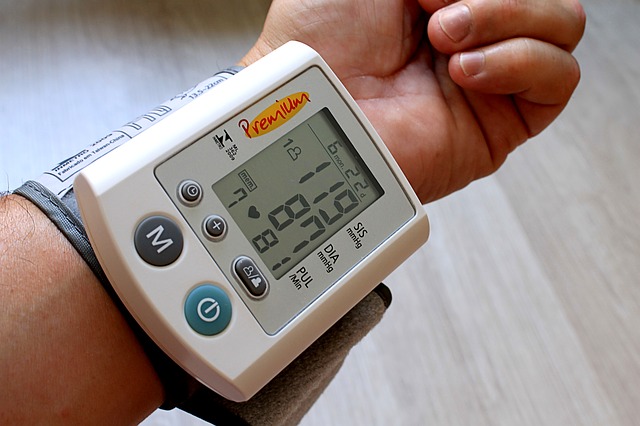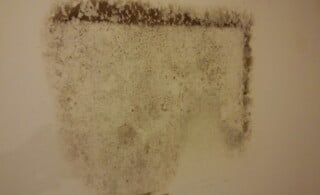
Though factors like exercise, lifestyle and age certainly play a huge role in our bodies’ natural immunities, your environment can also help or hurt your chances of getting sick. Issues like mold, radon and carbon dioxide can be hazards to your health. If your home contains one or more of these elements, you may be at risk for ailments that could have been avoided!
Mold Problems
One of the most well-known culprits in house-borne illness is mold. Generally associated with upper and lower respiratory symptoms, some estimate that up to 30% of American houses may have a mold problem. According to the EPA, mold can cause issues like:
- Asthma
- Eye, skin, nose, throat and lung irritation
- Sneezing
- Runny nose
- Red eyes
- Skin rash
The best way to find out if your home contains toxic mold is, of course, to have it tested. Mold testing averages less than $1,000, and mold removal generally runs about $1,100 to $3,200. Cleaning the mold up involves a variety of factors like the size of the mold, if the HVAC is contaminated, or if the problem stems from the sewage. The cost of cleanup will increase if the mold is more than 10 square feet in size. You could also have to replace your HVAC or sewage pipes if the mold stems from there.
Ventilation Issues
On a similar note, indoor air quality in this country has taken some serious hits recently. The biggest factor in this trend is many remodels and new constructions are far more air-tight than older homes. While this is great for heating and cooling costs, when extra insulation is not supplemented with better ventilation the airborne particles that would seep out of an older home can become trapped indoors and reduce air quality.
Some other causes of ventilation issues, if not a new build, might include:
- Negative pressure
- Humidifier issues
- Fan problems
- Lack of dampers
- Undersized ducts
- Condensation/mold
Some of these issues can be solved with some new hardware. Others are more complicated and will require an HVAC professional to ensure best results. Another way to ensure good indoor air quality is to add a whole house air cleaner. They help to remove indoor pollution, and you can get them as standalone units as well. If you want a whole house air cleaner, expect to pay about $640 to $2,500.
Radon Gas
Aptly dubbed “the silent killer,” the tasteless, colorless, odorless radon gas can be extremely harmful (or even deadly) in high concentrations. According to the National Cancer Institute, radon represents the second-leading cause of lung cancer behind cigarette smoking. Radon releases particles that you can inhale, which then damages the cells inside the lungs.
Since you can’t see radon in the air, you might need to have your home tested. If you’re buying or selling a home, it’s imperative to do this anyway. You won’t get it sold without a clean bill of health. Some other benefits of radon testing, other than your health, include:
- It’s cost-effective for your health in the long-term.
- It saves you money on energy bills.
- It’s not expensive to install a radon fan system.
You can test your home yourself with a kit or hire a professional to do it for you. If you have a professional test for radon, make sure it’s someone qualified to do the job. There are state radon contacts who keep a list of qualified professionals in the state. The price to test for radon gas is about $580, while remediating the radon will cost anywhere between $790 and $1,100.
Ready to start your home inspection?
Find ProsWater Problems
In the past decade, many of us have become far more concerned about what’s in the water (and for good reason). The world is facing a freshwater crisis, where only 2.5 percent of the water supply is fresh and drinkable. By 2025, almost 1.8 billion people will deal with water scarcity, depending on their location. Right now:
- 663 million people don’t have clean water
- 1/3 of all schools have no access to water or sanitation
- 1/3 of all low and middle-income countries with healthcare lack safe water
In addition to this crisis, issues can arise every day with regular drinking water. Homeowners could see potential problems like:
- Bacteria
- Chloride and fluoride
- Copper
- Acidic water
- Heavy metals
Some of these issue can cause irreparable health damage like cancer and liver or kidney damage. Others are not a huge issue unless they reach past a certain concentration. Oftentimes, you’re better off safe than sorry by fixing the problem.
So what do you do? Though buying bottled water is certainly an option, installing a water filtration system is an alternative with long-term benefits to your plumbing and health. The average cost of installing a water treatment and purification system is anywhere from $800 to $2,500.
Pest Infestation
While the occasional squirrel is easy to handle, when pests appear en masse, it can pose a lot of problems like:
- Structural damage
- Health risks (asthma, West Nile, hantavirus)
- Interior and exterior damage
How can you tell if there’s an infestation? Depending on the type of pest, you might look for a lot of them in one place, droppings, odd smells/sounds and holes/cracks in your home. The sooner you spot the problem, the quicker you can fix it and prevent more expensive repairs.
Your solution? Traps, sprays and other pest control products at your local supermarket or hardware store stop the problem in its tracks usually. However, if you still spot pests, hiring a pest control service can make your home a more pleasant (and safer) place to live! The price to remove pests will vary by the type of problem you have — insects or animals. Expect to pay about $180 to remove insects and $300 to remove animals.
To prevent future infestations, you should take measures to detract pests. This includes (but is not limited to):
- Eliminating the source of pest attraction
- Storing food instead of leaving it out
- Removing any holes, cracks or easy entrances
- Keeping a close eye on moisture/dampness in the home
Conclusion
Keeping your home healthy not only ensures fewer repairs, but it also keeps your health from declining. Taking steps to prevent things like mold and pests could make the difference in your medical bills and professional repair needs. If you have any worries about your home’s health, a local home inspector could help root out the problem or give you peace of mind.
 Lead Paint Common Sense
Lead Paint Common Sense  How Do I Get Rid of the Moldy Odor in My Basement?
How Do I Get Rid of the Moldy Odor in My Basement?  The Reason for Mold Inspection
The Reason for Mold Inspection  Guide to Room-by-Room Repairs for Easy Accessibility for Disabled Loved Ones
Guide to Room-by-Room Repairs for Easy Accessibility for Disabled Loved Ones  Pool Safety Guide for Homeowners
Pool Safety Guide for Homeowners 

Are You Familiar With This Topic? Share Your Experience.